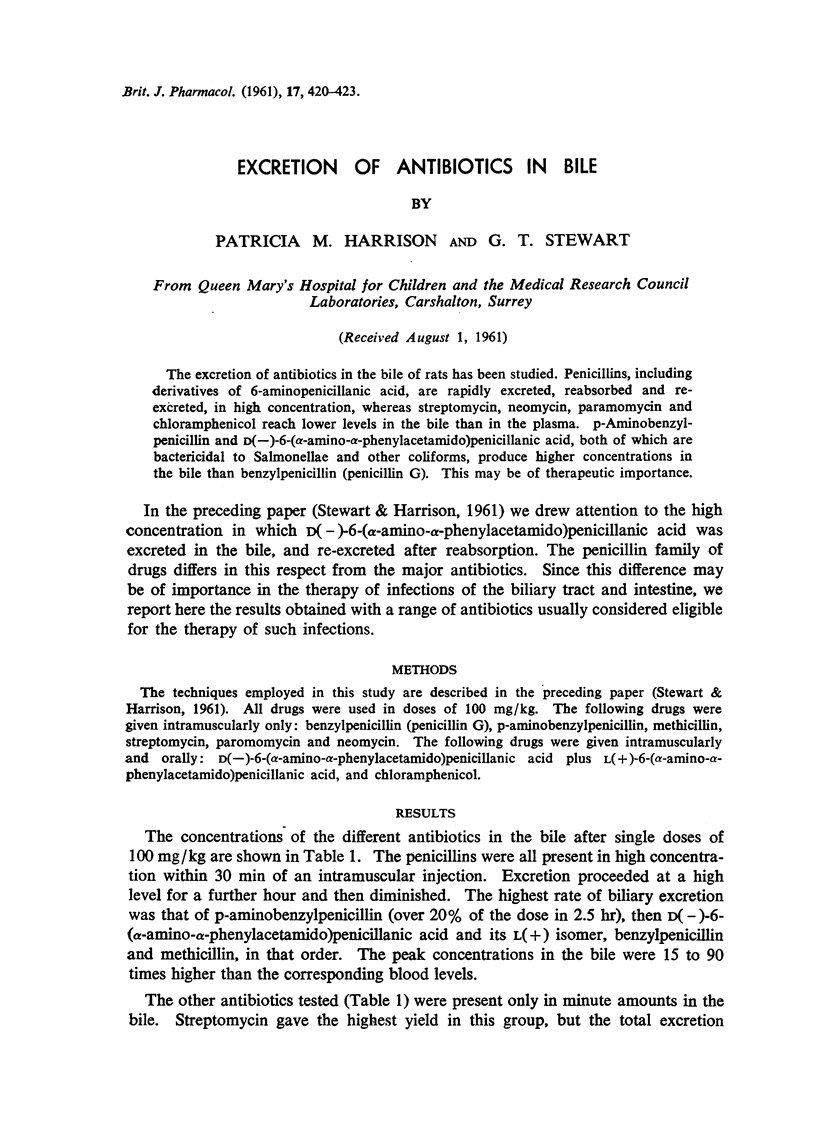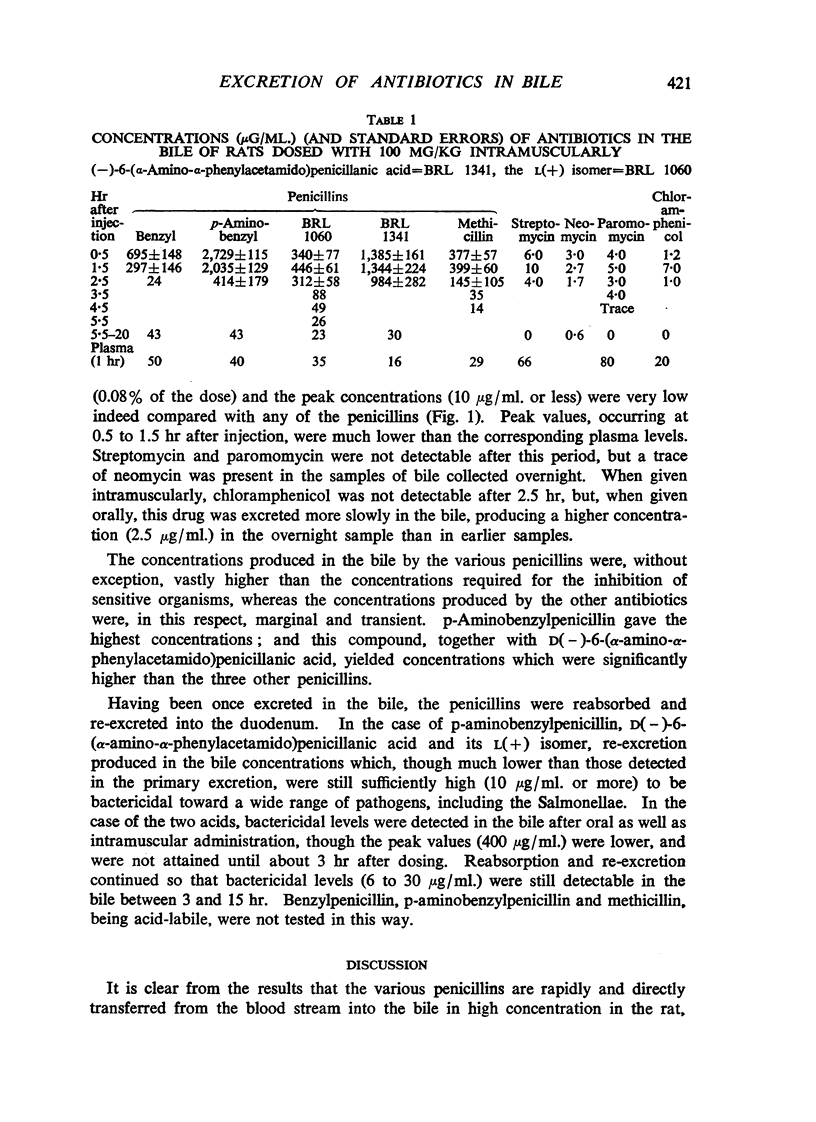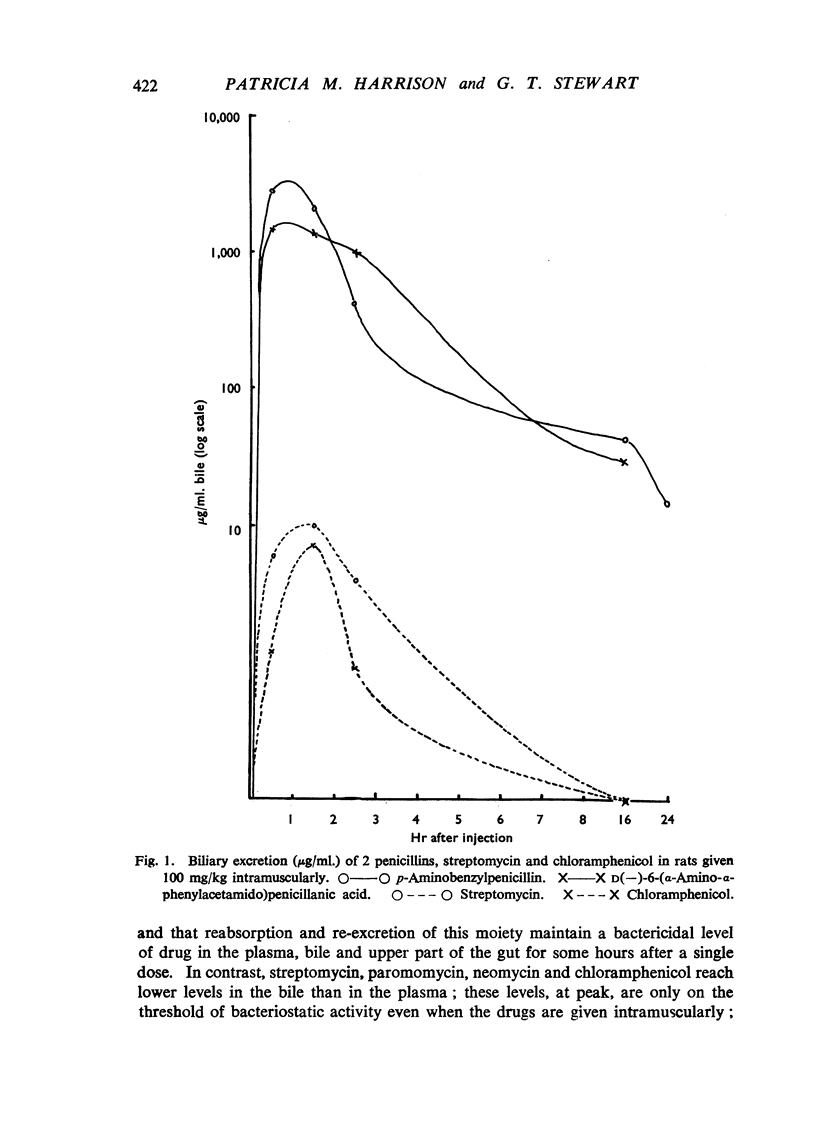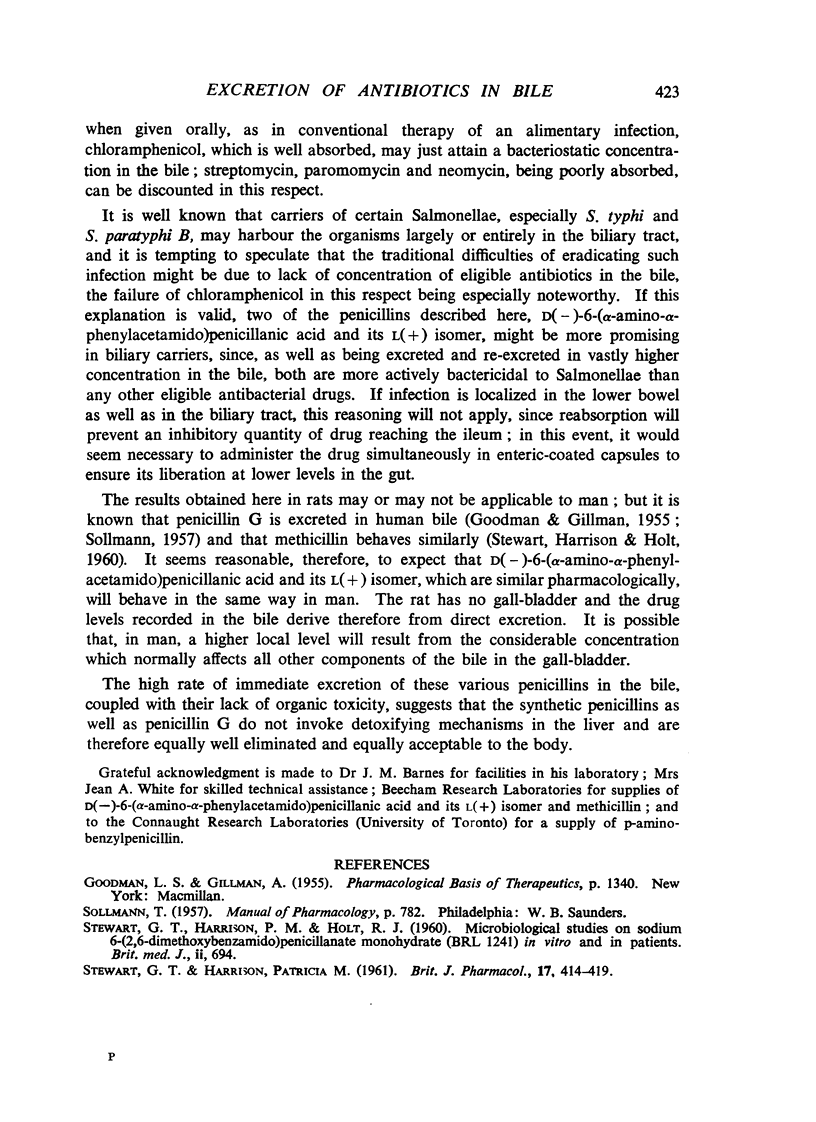Abstract
The excretion of antibiotics in the bile of rats has been studied. Penicillins, including derivatives of 6-aminopenicillanic acid, are rapidly excreted, reabsorbed and re-excreted, in high concentration, whereas streptomycin, neomycin, paramomycin and chloramphenicol reach lower levels in the bile than in the plasma. p-Aminobenzylpenicillin and D(—)-6-(α-amino-α-phenylacetamido)penicillanic acid, both of which are bactericidal to Salmonellae and other coliforms, produce higher concentrations in the bile than benzylpenicillin (penicillin G). This may be of therapeutic importance.
Full text
PDF



Selected References
These references are in PubMed. This may not be the complete list of references from this article.
- STEWART G. T., HARRISON P. M. Excretion and re-excretion of a broad-spectrum penicillin in bile. Br J Pharmacol Chemother. 1961 Dec;17:414–419. doi: 10.1111/j.1476-5381.1961.tb01127.x. [DOI] [PMC free article] [PubMed] [Google Scholar]
- STEWART G. T. Microbiological studies on sodium 6-(2, 6 dimethoxybenzamido) penicillanate monohydrate (BRL 1241) in vitro and in patients. Br Med J. 1960 Sep 3;2(5200):694–699. doi: 10.1136/bmj.2.5200.694. [DOI] [PMC free article] [PubMed] [Google Scholar]


